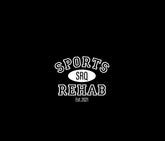Plantar Fasciitis Rehabilitation
Plantar fasciitis is a common foot condition that can be incredibly painful and disruptive. It’s a common and often painful foot condition characterized by inflammation of the plantar fascia, a thick band of tissue that runs along the bottom of the foot, connecting the heel bone to the toes. This condition typically manifests as sharp or stabbing heel pain, especially when taking the first steps in the morning or after prolonged periods of rest. Plantar fasciitis is usually caused by excessive strain on the plantar fascia due to factors like overuse, improper footwear, poor foot biomechanics, or tight calf muscles.
The good news is that with evidence-based strategies and a commitment to rehabilitation, you can alleviate pain, improve foot function, and get back to doing what you love. In this article, we'll explore the best practices for plantar fasciitis rehabilitation, drawing on science-backed techniques to help you recover. At SRQ Sports Rehab in sunny Sarasota, Florida, we understand the importance of getting you back on your feet, quite literally!
-
Strengthening Intrinsic Foot Muscles via Physical Therapy
One of the first steps in healing plantar fasciitis is strengthening your foot's intrinsic muscles. Physical therapy plays a vital role in this process. Through targeted exercises, therapists can help you improve muscle strength and stability in the foot, reducing the strain on the plantar fascia. This evidence-based approach can make a significant difference in your recovery.
-
Improving Foot Biomechanics
Foot biomechanics matter more than you might think. Addressing issues like overpronation or excessive supination can help distribute pressure more evenly across your foot, reducing strain on the plantar fascia. Customized exercises and orthotics can be prescribed by physical therapists to correct these biomechanical issues, promoting a quicker recovery.
-
Stretching
Stretching is a crucial aspect of plantar fasciitis rehabilitation. Gentle calf and plantar fascia stretches can relieve tension and promote flexibility. Daily stretching routines, along with guidance from a physical therapist, can make a world of difference in your recovery.
-
Orthotics
Custom orthotics can be a game-changer in plantar fasciitis rehabilitation. They provide additional arch support, reducing the load on the plantar fascia. Evidence suggests that orthotics can significantly improve pain and function in individuals with plantar fasciitis.
-
Choosing the Right Shoes
Selecting the right footwear is paramount. Look for shoes with good arch support, cushioning, and shock absorption. Your physical therapist can provide recommendations tailored to your specific needs.
-
Soft Tissue Mobilization and Dry Needling
Soft tissue mobilization techniques, such as massage and myofascial release, can alleviate muscle tightness and improve blood flow. Additionally, dry needling, a minimally invasive therapy, has been shown to provide relief by targeting trigger points in the calf and foot muscles. Incorporating these therapies into your treatment plan can enhance your rehabilitation progress.
Gradual Return to Activity
As your symptoms improve, it's essential to reintroduce activities gradually. Your physical therapist can guide you through a structured program to prevent re-injury and ensure a successful return to your favorite sports and activities.
Plantar fasciitis can be a challenging condition, but with the right evidence-based strategies and the guidance of a skilled physical therapist, you can overcome it. Strengthening intrinsic foot muscles, improving foot biomechanics, incorporating stretching, orthotics, and selecting the right shoes are all essential elements of a successful rehabilitation plan. Additionally, soft tissue mobilization, dry needling, and effective pain management techniques can expedite your recovery. Remember, the journey to pain-free feet may take time, so be patient and stay committed to the process. At SRQ Sports Rehab, we're here to support your journey to a healthier, happier you. Get started on the path to recovery today and rediscover the joy of pain-free movement!

